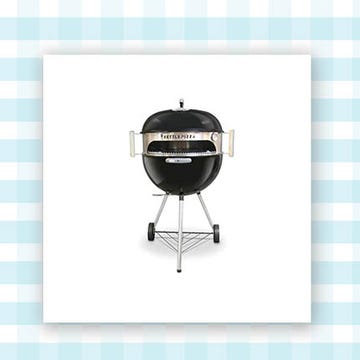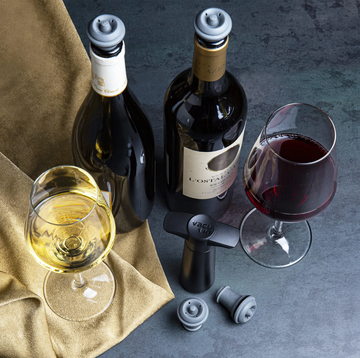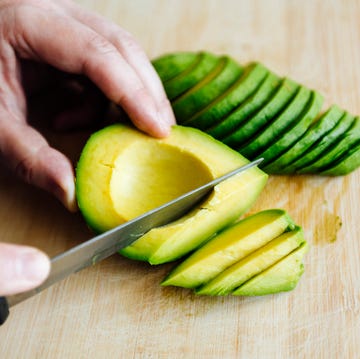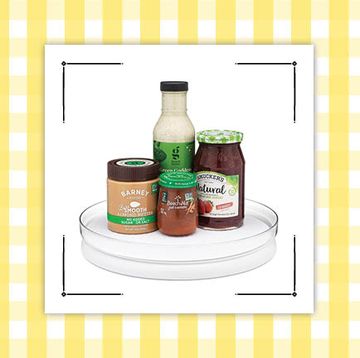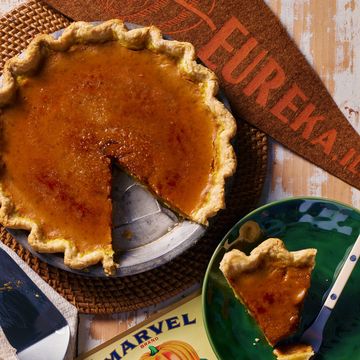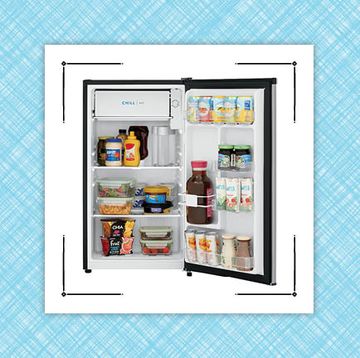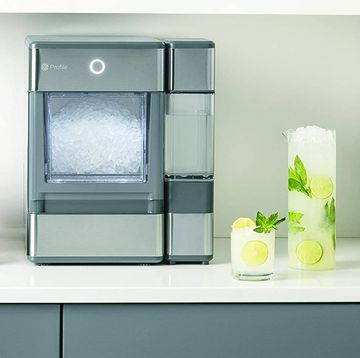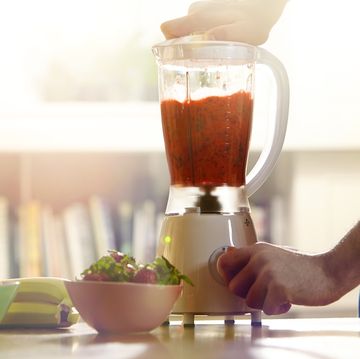Is it possible for one humble ingredient to be the key to the fluffiest biscuits and the juiciest fried chicken you ever had? Yes, meet buttermilk, all-star of the country kitchen. It's the secret to favorites like buttermilk pie and buttermilk ranch dressing, which is so tasty with fried pickles (er, salad). But the magic is not only in buttermilk's flavor but in its chemistry too. The power of buttermilk helps us achieve tenderness in meats and baked goods, and in the latter, it also contributes to a higher rise. But what is buttermilk, exactly, and if you find yourself staring down a recipe that calls for it, can you make it at home? We break it down, share some easy buttermilk substitutes, and for the DIY enthusiasts among you, provide tips for how to make homemade buttermilk.
What Is Buttermilk?
Well, first, there's more than one type: Traditional buttermilk is the low-fat, high-protein liquid left over after churning butter. If the butter-making process begins with cultured (fermented or ripened) cream, sour cream buttermilk is produced. If fresh cream is used, sweet cream buttermilk is the result—and it may also be fermented after butter-making.
Today, however, what you find in most grocery stores—and what most recipes use—is cultured buttermilk, which is not a byproduct of butter-making. To make cultured buttermilk, active bacteria cultures (good ones!) are added to milk, either whole or low-fat. Then the mixture is heated and allowed to ferment for approximately 12 hours.
The fermentation process is what transforms buttermilk into a game-changer in the kitchen, thickening it and adding valuable compounds like lactic acid (responsible for the tang) and diacetyl (which lends a buttery flavor and aroma). As a marinade, buttermilk tenderizes meat thanks its acidity. In breads and cakes, the acid breaks down gluten strands and interacts with baking soda to produce carbon dioxide, yielding a tender, fluffy texture—hello, buttermilk pancakes. And, finally, the complexity of buttermilk's flavor profile can take dishes to the next level.
How Do You Make Buttermilk?
You can make your own cultured buttermilk—if you've got a day or two (we'll get to that). But if you are in the kitchen cooking right now and trying to figure out what to use in a recipe the calls for buttermilk (and a trip to the store is out of the question), what you need is a homemade buttermilk substitute that will give you similar results.
Easy Buttermilk Substitute Recipes
For marinating and baking, one strategy is simply to use milk with the addition of an acid to fulfill the missing lactic acid’s role as a tenderizer and/or activator of leavening agents. Here are three ways to use this trick:
- Lemon juice: 1 tablespoon fresh lemon juice, plus enough milk to measure 1 cup.
- White vinegar: 1 tablespoon white vinegar, plus enough milk to measure 1 cup.
- Cream of tartar: 1 3/4 teaspoons cream of tartar plus 1 cup milk. (In baked goods, you can simply add the cream of tartar to the dry ingredients and add the milk with your liquids.)
Another tactic: Use full-fat yogurt as a 1-to-1 substitute. It has a similar flavor and consistency to buttermilk (it’s also a fermented dairy product, after all), so you should be fine substituting it for buttermilk in cooked and uncooked recipes in a pinch. If you’re using Greek yogurt, which is extra thick, you can thin it out by mixing 2/3 cup Greek yogurt with 1/3 cup water and whisking until smooth.
You can also buy buttermilk powder, made from real buttermilk, to keep on hand in your pantry.
How to Make Buttermilk From Milk
If you are a DIY’er and have the time, you can make cultured buttermilk from milk, no churning required. You can use a buttermilk starter culture, like the one sold by Cultures for Health, but the company’s website also shares another DIY method: Stir 1/3 cup store-bought buttermilk with live active cultures into 1 cup milk, cover loosely, and let it ferment in a warm place (70°-77°F) until thickened, 12 to 24 hours. Then refrigerate. (Yep, that’s right, you can use buttermilk… to make buttermilk.)
How to Make Traditional Buttermilk
You can absolutely make buttermilk the old-fashioned way by churning butter, but keep in mind you’ll end up with more butter than buttermilk: It takes 1 gallon of cream to get a half-pint of buttermilk.
Country Living’s Homemade Butter recipe will give you unfermented sweet cream buttermilk, which is wonderful and nutritious, but it won’t have the tang or thickness of cultured buttermilk. In days of old, you could leave your sweet cream buttermilk out overnight to ferment naturally. Today, in the age of pasteurization, you will need to add live cultures back if you want to ferment it. Blogger Angela of Mighty Mrs. does this with her sweet cream buttermilk either by using a starter culture or by stirring a small amount of plain kefir into the buttermilk, covering it with cheesecloth, and letting it ferment at room temperature for a couple of days until thick.
Alternatively, you can ferment heavy cream before making butter. This will give you fermented buttermilk as well as yummy cultured butter, aka European-style butter, one of our favorite types of butter. Find instructions to make cultured butter and buttermilk at The New York Times (their recipe uses a little yogurt to add active cultures).
Whichever method you follow, refrigerate your buttermilk after fermentation is done.
More Buttermilk Facts
What's the difference between milk and buttermilk?
Cow’s milk is a fresh dairy product. Buttermilk is a fermented liquid that's created by culturing and fermenting milk products or by straining off the liquid that results from churning butter.
What does buttermilk taste like?
Cultured buttermilk sold in stores today is thicker than regular milk, and it has a distinctive tang and buttery flavor. Traditional sweet cream buttermilk, a byproduct of butter-making, will be thinner and have a sweeter, more subtle flavor.
What are the nutritional benefits of buttermilk?
Buttermilk is low in fat and contains more protein per cup than milk. It's also lower in calories than milk and high in calcium, vitamin B12, and potassium. And because it contains live cultures (similar to yogurt), it's more easily digestible than milk.
Where do you buy buttermilk?
Look for cultured buttermilk in the dairy section of the grocery store, but finding traditional buttermilk might be more of a challenge. If you live near a dairy farm that makes butter, they sometimes sell buttermilk in their dairy case. We also recommend checking for it at your local farmer's market.
How do you store buttermilk?
Make sure to keep buttermilk in the refrigerator. Because it is fermented and cultured, it tends to last quite a while—typically 1 to 2 weeks beyond the carton date. It can also be frozen for up to 3 months. If it smells spoiled (versus tangy) or has visible mold, throw it out.
What is buttermilk used for?
Buttermilk can be used in a variety of ways—both fresh or cooked. It’s the base for America’s favorite salad dressing: ranch! You can also use it to bake up perfectly flaky biscuit or scones, or mix it into pancakes or waffle batter. For savory applications, use it to marinade chicken, splash it into gravy for chicken fried steak, pour it in a cold cucumber soup, or sub it in for heavy cream in mashed potatoes.
Honestly, the sky is the limit as far as recipes that are enhanced by buttermilk. But here are a few of our Country Living recipes that highlight buttermilk:








